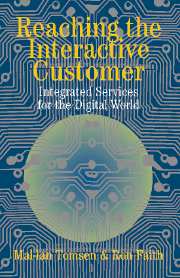1 - Permeation of the Information Age
Published online by Cambridge University Press: 11 August 2009
Summary
Digital devices, complex networks, and interactive applications and services permeate our daily routines. The adoption of digital, integrated services in peoples' lives stems from a causal chain involving customers of new technologies, device designers and application product planners. Consumer expectations, set by the growing capabilities of interactive devices, fuel innovation from application and service product planners. Product planners then push the device designers to accommodate their increasingly sophisticated features (see Figure 1-1). The key to continual improvement without costly design mistakes lies in understanding how the consumers' expectations evolve with usage.
For example, cell phones with Internet access influence the consumers' expectations about repurposing the phone for other uses. However, browsing the Internet on a cell phone is a frustrating experience, due to the limited screen display. Application and service designers step in to meet consumers' expectations of Internet access with alternatives to Web browsing. Internet-based applications deliver discrete amounts of information suited to the cell phone's screen display, such as personalized weather and stock quotes. Internet-based instant messaging and chat allow consumers the ability to use the phone's small screen for shorthand text messages. The adoption of these types of services and applications provides incentive for device designers to develop new features to accommodate the different usage.
The evolutionary cycle for interactive devices moves as fast as the device manufacturers and application providers release new variations of the product.
- Type
- Chapter
- Information
- Reaching the Interactive CustomerIntegrated Services for the Digital World, pp. 1 - 16Publisher: Cambridge University PressPrint publication year: 2003



